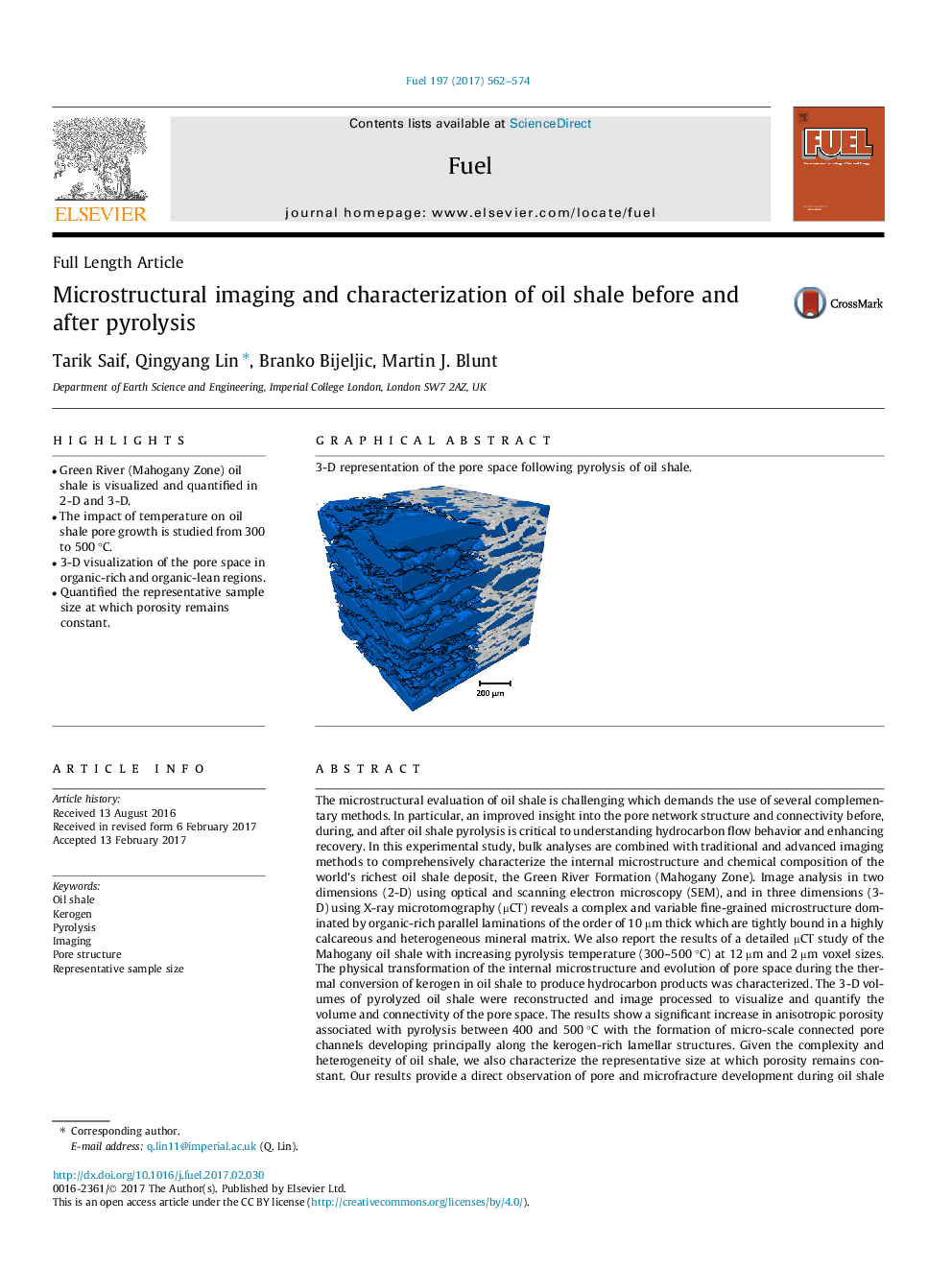| کد مقاله | کد نشریه | سال انتشار | مقاله انگلیسی | نسخه تمام متن |
|---|---|---|---|---|
| 6475313 | 1424967 | 2017 | 13 صفحه PDF | دانلود رایگان |
- Green River (Mahogany Zone) oil shale is visualized and quantified in 2-D and 3-D.
- The impact of temperature on oil shale pore growth is studied from 300 to 500 °C.
- 3-D visualization of the pore space in organic-rich and organic-lean regions.
- Quantified the representative sample size at which porosity remains constant.
The microstructural evaluation of oil shale is challenging which demands the use of several complementary methods. In particular, an improved insight into the pore network structure and connectivity before, during, and after oil shale pyrolysis is critical to understanding hydrocarbon flow behavior and enhancing recovery. In this experimental study, bulk analyses are combined with traditional and advanced imaging methods to comprehensively characterize the internal microstructure and chemical composition of the world's richest oil shale deposit, the Green River Formation (Mahogany Zone). Image analysis in two dimensions (2-D) using optical and scanning electron microscopy (SEM), and in three dimensions (3-D) using X-ray microtomography (µCT) reveals a complex and variable fine-grained microstructure dominated by organic-rich parallel laminations of the order of 10 µm thick which are tightly bound in a highly calcareous and heterogeneous mineral matrix. We also report the results of a detailed µCT study of the Mahogany oil shale with increasing pyrolysis temperature (300-500 °C) at 12 µm and 2 µm voxel sizes. The physical transformation of the internal microstructure and evolution of pore space during the thermal conversion of kerogen in oil shale to produce hydrocarbon products was characterized. The 3-D volumes of pyrolyzed oil shale were reconstructed and image processed to visualize and quantify the volume and connectivity of the pore space. The results show a significant increase in anisotropic porosity associated with pyrolysis between 400 and 500 °C with the formation of micro-scale connected pore channels developing principally along the kerogen-rich lamellar structures. Given the complexity and heterogeneity of oil shale, we also characterize the representative size at which porosity remains constant. Our results provide a direct observation of pore and microfracture development during oil shale pyrolysis and the petrophysical measurements from this study serve as valuable input parameters to modeling oil shale pyrolysis processes.
3-D representation of the pore space following pyrolysis of oil shale.253
Journal: Fuel - Volume 197, 1 June 2017, Pages 562-574
